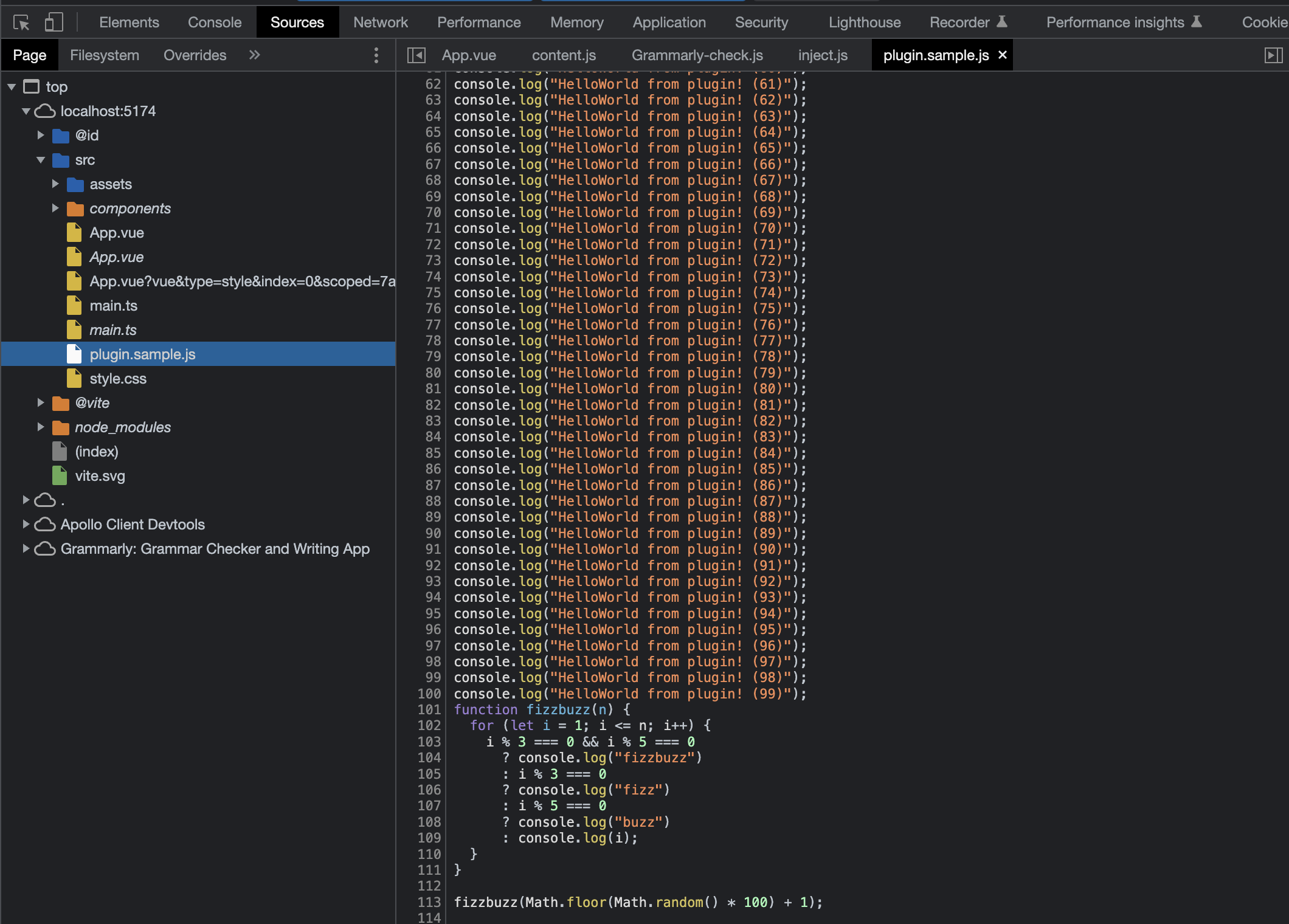周邊知識
SFC 是如何實現的?
現在,讓我們最終開始支援單檔案組件(SFC).
那麼,我們應該如何支援它呢?SFC 就像模板一樣,在開發期間使用,在執行時不存在.
對於那些已經完成模板開發的人來說,我認為這只是如何編譯它的簡單問題.
你只需要將以下 SFC 程式碼:
<script>
export default {
setup() {
const state = reactive({ message: 'Hello, chibivue!' })
const changeMessage = () => {
state.message += '!'
}
return { state, changeMessage }
},
}
</script>
<template>
<div class="container" style="text-align: center">
<h2>message: {{ state.message }}</h2>
<img
width="150px"
src="https://upload.wikimedia.org/wikipedia/commons/thumb/9/95/Vue.js_Logo_2.svg/1200px-Vue.js_Logo_2.svg.png"
alt="Vue.js Logo"
/>
<p><b>chibivue</b> is the minimal Vue.js</p>
<button @click="changeMessage">click me!</button>
</div>
</template>
<style>
.container {
height: 100vh;
padding: 16px;
background-color: #becdbe;
color: #2c3e50;
}
</style>轉換為以下 JS 程式碼:
export default {
setup() {
const state = reactive({ message: 'Hello, chibivue!' })
const changeMessage = () => {
state.message += '!'
}
return { state, changeMessage }
},
render(_ctx) {
return h('div', { class: 'container', style: 'text-align: center' }, [
h('h2', `message: ${_ctx.state.message}`),
h('img', {
width: '150px',
src: 'https://upload.wikimedia.org/wikipedia/commons/thumb/9/95/Vue.js_Logo_2.svg/1200px-Vue.js_Logo_2.svg.png',
}),
h('p', [h('b', 'chibivue'), ' is the minimal Vue.js']),
h('button', { onClick: _ctx.changeMessage }, 'click me!'),
])
},
}你可能會想知道樣式!但現在,讓我們忘記這一點,專注於模板和腳本.
我們不會在最小範例中涵蓋 script setup.
我們應該何時以及如何編譯?
總之,「我們在建置工具解析相依性時編譯」. 在大多數情況下,SFC 從其他檔案匯入和使用. 此時,我們編寫一個外掛程式,在解析 .vue 檔案時編譯它並將結果綁定到應用程式.
import App from './App.vue' // 匯入 App.vue 時編譯
const app = createApp(App)
app.mount('#app')有各種建置工具,但這次讓我們嘗試為 Vite 編寫一個外掛程式.
由於可能很少有人從未編寫過 Vite 外掛程式,讓我們首先通過一個簡單的範例程式碼熟悉外掛程式實現.讓我們現在創建一個簡單的 Vue 專案.
pwd # ~
nlx create-vite
## ✔ Project name: … plugin-sample
## ✔ Select a framework: › Vue
## ✔ Select a variant: › TypeScript
cd plugin-sample
ni讓我們看看創建專案的 vite.config.ts 檔案.
import { defineConfig } from 'vite'
import vue from '@vitejs/plugin-vue'
// https://vitejs.dev/config/
export default defineConfig({
plugins: [vue()],
})你可以看到它將 @vitejs/plugin-vue 添加到外掛程式中. 實際上,當使用 Vite 創建 Vue 專案時,由於這個外掛程式,可以使用 SFC. 這個外掛程式根據 Vite 外掛程式 API 實現 SFC 編譯器,並將 Vue 檔案編譯為 JS 檔案. 讓我們嘗試在這個專案中創建一個簡單的外掛程式.
import { defineConfig, Plugin } from 'vite'
import vue from '@vitejs/plugin-vue'
// https://vitejs.dev/config/
export default defineConfig({
plugins: [vue(), myPlugin()],
})
function myPlugin(): Plugin {
return {
name: 'vite:my-plugin',
transform(code, id) {
if (id.endsWith('.sample.js')) {
let result = ''
for (let i = 0; i < 100; i++) {
result += `console.log("HelloWorld from plugin! (${i})");\n`
}
result += code
return { code: result }
}
},
}
}我創建了一個名為 myPlugin 的外掛程式.
由於它很簡單,我認為很多人不用解釋就能理解,但我還是會解釋一下以防萬一.
外掛程式符合 Vite 要求的格式.
有各種選項,但由於這是一個簡單的範例,我只使用了 transform 選項.
我建議查看官方文件和其他資源以獲取更多資訊:https://vitejs.dev/guide/api-plugin.html
在 transform 函式中,你可以接收 code 和 id.
你可以將 code 視為檔案的內容,將 id 視為檔案名.
作為返回值,你將結果放在 code 屬性中. 你可以根據 id 為每種檔案類型編寫不同的處理,或修改 code 來重寫檔案的內容.
在這種情況下,我為以 *.sample.js 結尾的檔案在檔案內容的開頭添加了 100 個控制台日誌.
現在,讓我們實現一個範例 plugin.sample.js 並檢查它.
pwd # ~/plugin-sample
touch src/plugin.sample.js~/plugin-sample/src/plugin.sample.js
function fizzbuzz(n) {
for (let i = 1; i <= n; i++) {
i % 3 === 0 && i % 5 === 0
? console.log('fizzbuzz')
: i % 3 === 0
? console.log('fizz')
: i % 5 === 0
? console.log('buzz')
: console.log(i)
}
}
fizzbuzz(Math.floor(Math.random() * 100) + 1)~/plugin-sample/src/main.ts
import { createApp } from 'vue'
import './style.css'
import App from './App.vue'
import './plugin.sample.js' // 添加
createApp(App).mount('#app')讓我們在瀏覽器中檢查它.
pwd # ~/plugin-sample
nr dev

你可以看到原始碼已經被正確修改了.
到此為止的原始碼:
chibivue (GitHub)
